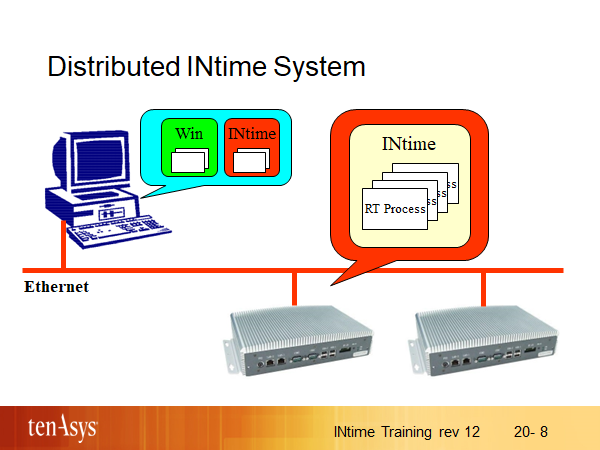Distributed INtime System

For INtime to know which nodes exist, the nodes must be configured by the INtime Configuration utility.
There are two kinds of nodes, all of which are optional:
->The local node(s) lives inside the same host where Windows runs. It enables fast communication by the option to map shared memory directly into the Windows process‘s address space. The disadvantage is that it does not live independent of Windows (for example, if Windows has crashed and is rebooted, the local node is also restarted).
->An INtime Distributed RTOS node uses TCP/IP to connect to Windows. The remote node must have an Ethernet controller that is supported by the INtime network stack. The network connection can also be used by RT and Windows applications.
Note that defining a remote node (on an Ethernet link) causes NTX to probe that connection when NTX is started on the Windows host.